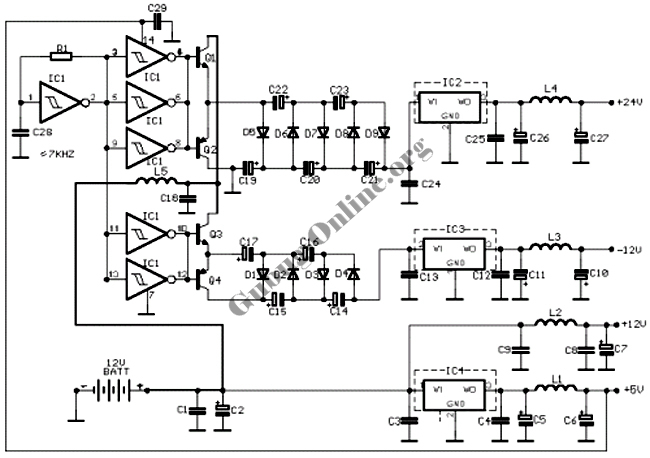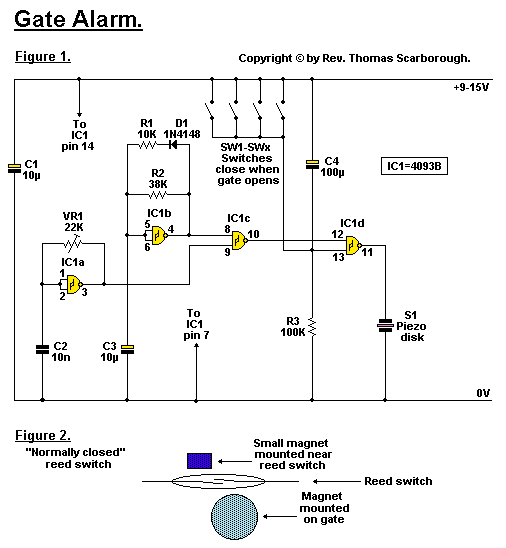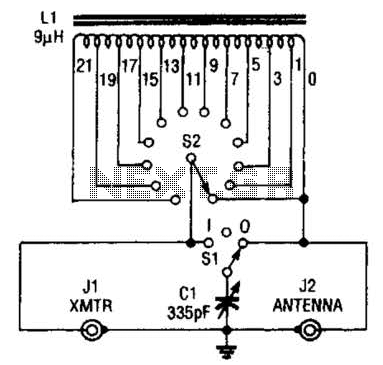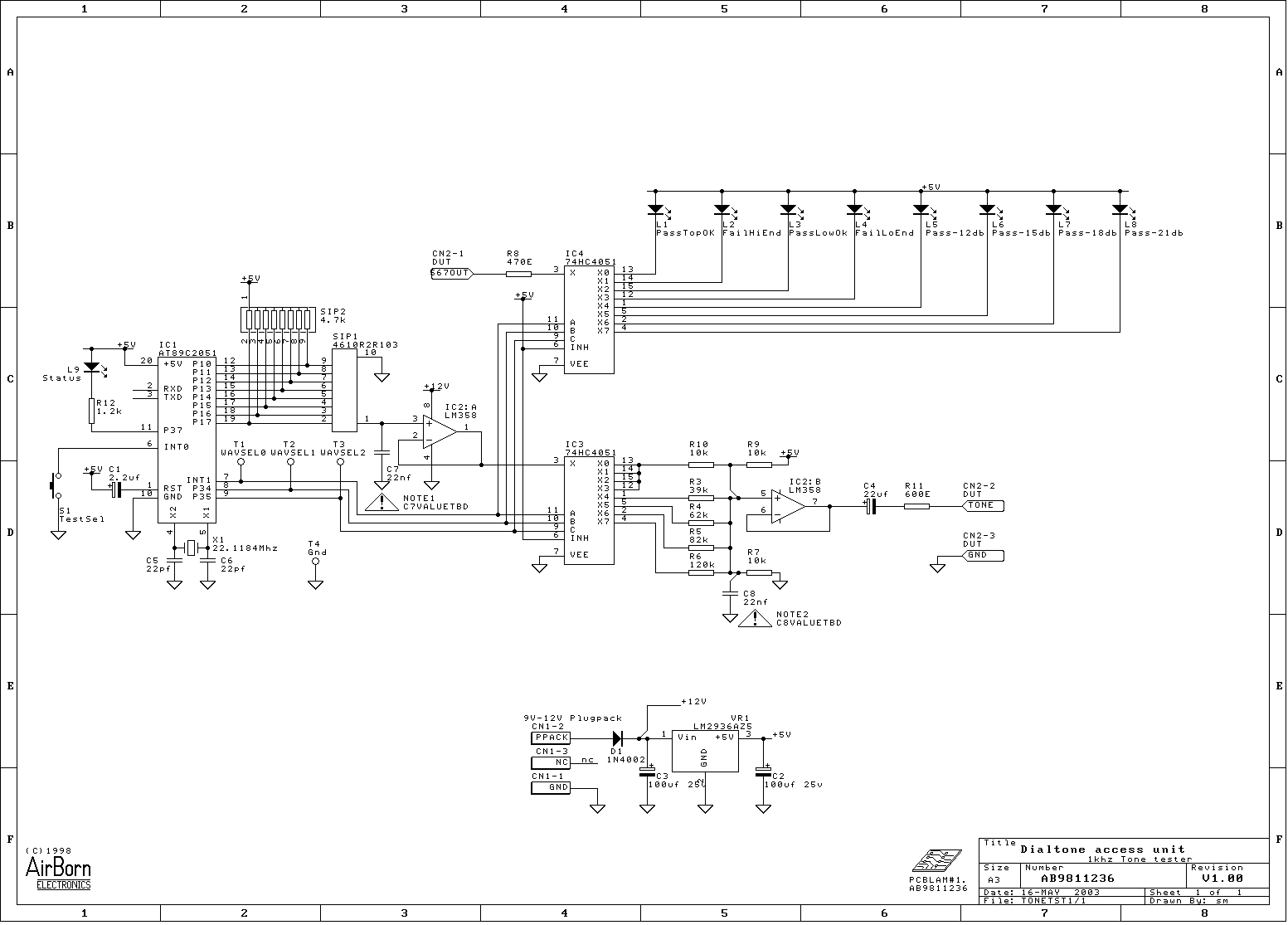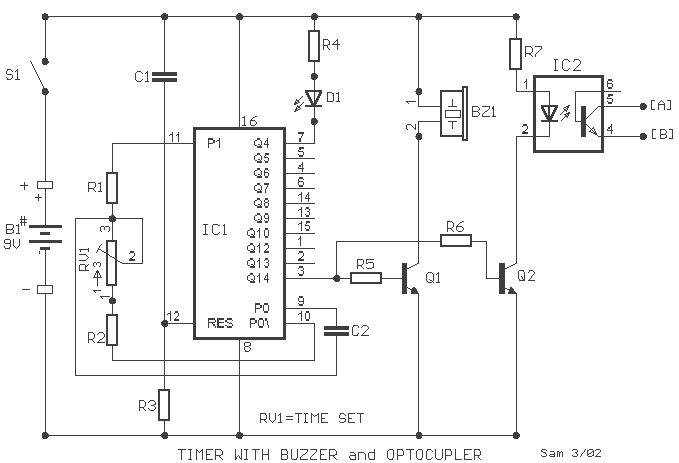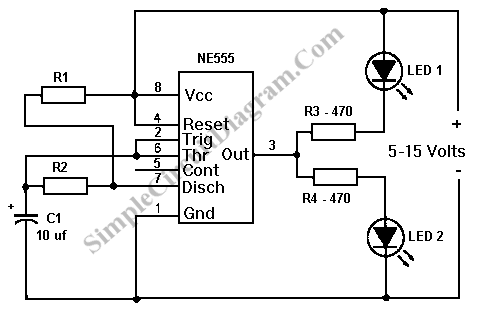
Voltage-controlled voltage source second order band-pass filter circuit
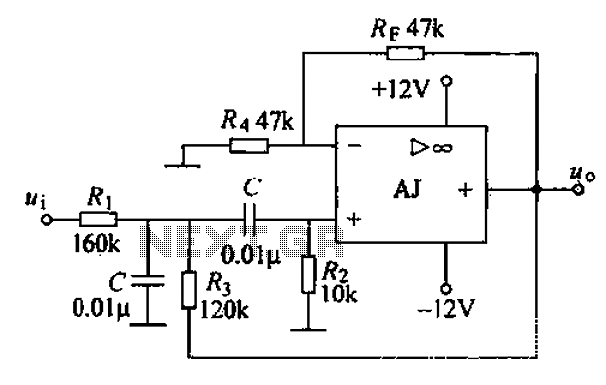
A band-pass filter permits only signals within a specified frequency range to pass through, while attenuating or suppressing those outside this range. This is characterized by a lower frequency limit and an upper frequency limit. A typical implementation is a voltage-controlled voltage source second-order band-pass filter. The advantage of this circuit is that it allows for the adjustment of the RF bandwidth ratio without impacting the center frequency. The circuit utilizes an integrated operational amplifier, specifically the AJ dual op-amp model vA747.
The band-pass filter is a critical component in various electronic applications, particularly in communications and signal processing. It is designed to allow frequencies within a certain range to pass while attenuating frequencies outside this range. The design typically employs a second-order configuration, which provides a steeper roll-off at the cutoff frequencies compared to first-order filters, thereby improving selectivity.
In the proposed voltage-controlled voltage source (VCVS) configuration, the filter's bandwidth can be dynamically adjusted. This is achieved by varying the control voltage applied to the filter circuit, which alters the reactive components (such as capacitors and inductors) in the filter design. This feature is particularly useful in applications where the signal environment may change, allowing the filter to adapt without needing physical modifications.
The use of the AJ dual op-amp vA747 in this circuit provides several advantages. The operational amplifier's high gain and low noise characteristics contribute to the overall performance of the filter. The dual configuration allows for the implementation of multiple stages within a compact layout, enhancing the circuit's efficiency and reducing component count.
The design of the band-pass filter involves selecting appropriate resistor and capacitor values to set the desired center frequency and bandwidth. The center frequency, defined as the frequency at which the filter's response is maximized, can be calculated using the formula:
\[ f_c = \frac{1}{2\pi\sqrt{LC}} \]
where \( L \) is the inductance and \( C \) is the capacitance in the circuit. The quality factor, \( Q \), which determines the selectivity of the filter, can also be adjusted through component values.
In practical applications, this band-pass filter can be utilized in RF communication systems, audio processing, and any system where signal integrity is paramount. By maintaining a sharp cutoff and allowing for dynamic bandwidth adjustment, the filter can effectively isolate desired signals from unwanted noise, enhancing overall system performance. Band pass filter allows only signals within a certain frequency range pass through rather than the pass band lower frequency than the upper limit of the low and high frequency signals are to be attenuated or suppressed. A typical voltage-controlled voltage source second order band-pass filter as shown in FIG. The advantage of this circuit is to change the ratio of wind RF bandwidth can be changed without affecting the center frequency. FIG integrated operational amplifier AJ dual op amp vA747.
The band-pass filter is a critical component in various electronic applications, particularly in communications and signal processing. It is designed to allow frequencies within a certain range to pass while attenuating frequencies outside this range. The design typically employs a second-order configuration, which provides a steeper roll-off at the cutoff frequencies compared to first-order filters, thereby improving selectivity.
In the proposed voltage-controlled voltage source (VCVS) configuration, the filter's bandwidth can be dynamically adjusted. This is achieved by varying the control voltage applied to the filter circuit, which alters the reactive components (such as capacitors and inductors) in the filter design. This feature is particularly useful in applications where the signal environment may change, allowing the filter to adapt without needing physical modifications.
The use of the AJ dual op-amp vA747 in this circuit provides several advantages. The operational amplifier's high gain and low noise characteristics contribute to the overall performance of the filter. The dual configuration allows for the implementation of multiple stages within a compact layout, enhancing the circuit's efficiency and reducing component count.
The design of the band-pass filter involves selecting appropriate resistor and capacitor values to set the desired center frequency and bandwidth. The center frequency, defined as the frequency at which the filter's response is maximized, can be calculated using the formula:
\[ f_c = \frac{1}{2\pi\sqrt{LC}} \]
where \( L \) is the inductance and \( C \) is the capacitance in the circuit. The quality factor, \( Q \), which determines the selectivity of the filter, can also be adjusted through component values.
In practical applications, this band-pass filter can be utilized in RF communication systems, audio processing, and any system where signal integrity is paramount. By maintaining a sharp cutoff and allowing for dynamic bandwidth adjustment, the filter can effectively isolate desired signals from unwanted noise, enhancing overall system performance. Band pass filter allows only signals within a certain frequency range pass through rather than the pass band lower frequency than the upper limit of the low and high frequency signals are to be attenuated or suppressed. A typical voltage-controlled voltage source second order band-pass filter as shown in FIG. The advantage of this circuit is to change the ratio of wind RF bandwidth can be changed without affecting the center frequency. FIG integrated operational amplifier AJ dual op amp vA747.
